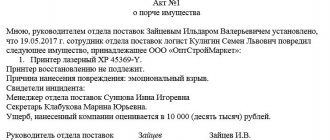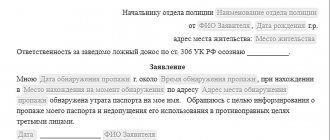Concept and varieties
The provisions of any agreement can be changed and supplemented while maintaining the basic structure of the transaction.
Modern legislation does not disclose what an annex to a contract is and what legal force it has. In practice, this document is understood as provisions recorded in the same form as the transaction itself, revealing and clarifying its features. If the transaction between the parties is not a one-time transaction, then in most cases the agreement on essential terms, such as price, delivery time, quantity and volume, is carried out by signing annexes. Depending on the changes made to the contract, the following types are distinguished:
- defining essential conditions (this group includes provisions without which the transaction does not exist, for example, for delivery this is the cost, the deadline for fulfilling obligations, and for purchase and sale - the quantity and range of goods);
- establishing samples and forms (this type is relevant for the active interaction of the parties in the process of fulfilling rights and obligations, using the example of an appendix to the contract, the following forms are distinguished: applications, claims, specifications and the procedure for filling them out);
- clarifying provisions or the procedure for performing work (this type is used, for example, when approving drawings of manufactured parts under a contract transaction in order to fix all the parameters).
The above division into categories is not legislative and was formed in the process of practical application. Due to the development of legal relations, groups are supplemented and changed. Applications, by their legal nature, like specifications, are documents that cannot exist independently.
Read more: “We clarify the requirements in the specification for the service agreement”
Why do they do it and what are they?
Legal written agreements are drawn up using standard forms. To provide a detailed description of the item and detail a number of conditions, the parties draw up and sign additional documentation, which usually describes the technical specifications, deciphers the cost of the product, and clarifies the delivery procedure.
Additions are an integral part of the agreement, subject to their mandatory listing in the main text. Here are the applications needed for contracts with various items:
- Supplies: specifications, tariffs, supply request, delivery schedule, settlement procedure.
- Contract: design and estimate documentation, technical specifications, work schedule, certificates of completed work, certificate of cost.
- Provision of services: list of services, schedule, payment procedure.
- Sales and purchases: list of products, detailed description (if necessary), acceptance certificate.
- Labor: working conditions, work schedule, salary.
Special rules apply to contracting agreements. In Art. 432 of the Civil Code of the Russian Federation does not indicate what an annex to the agreement is, but in Part 1 of Art. 432, essential conditions are fixed, i.e. conditions mandatory for the execution of a specific type of agreement. In a contract, these are the types and volume of work that are indicated in the local estimate. The estimate is a mandatory and integral part of any contract agreement.
How does it differ from additional agreement and specifications?
The structure of the documents under consideration is similar to additional agreements and specifications. Due to the lack of differentiation of these concepts at the legislative level, the appendix as an appendix to the contract is used to amend the terms of the transaction without changing the main chapters: cost and settlement procedure, claim procedure, details of the parties, subject matter, rights and obligations, liability and force majeure . The additional agreement changes the essential terms, rights and obligations of the parties. For example, having reached a condition for continued cooperation, the parties enter into an additional agreement.
Specifications contain the range, quantity, name and period of the supplied products. They most often apply to transactions for the supply of goods. Due to the fact that samples of specifications and additional agreements are not established by law, division according to such content is not mandatory. If you call a document an additional agreement, but it contains the terms of the specification, the legal force of this is not lost, and it will have its effect. Such inaccuracies can only show your counterparty the level of legal literacy.
Read more: “Specification form for the supply agreement”
In what cases is it issued?
At the time of conclusion of the transaction, the parties have become familiar with the terms and conditions, and they have formed an understanding of how further interaction is planned to be carried out. When discussing the terms of the transaction, the parties decide which annexes are needed for the contract, depending on the specifics of the subject. The agreement includes a term that allows the parties to make references, for example: “The parties confirm the approval of the parts being manufactured by signing documents with approval of the drawing.” Their legal force does not depend on how the annexes to the agreement are written into the agreement. The main requirement for the validity of a document is compliance with its form. If the main agreement has been notarized, then subsequent changes are also certified, and in the case of state registration, registered.
If the execution of the agreement was not one-time in nature, additional conditions are drawn up as necessary. Let's look at the example of buying and selling. The buyer and seller have entered into a transaction in which one party supplies the other with goods. Essential terms, such as name, term and price, are indicated when concluding a transaction. The buyer sent an application for the need to purchase the goods, the seller prepared a written response, after which both counterparties signed an agreement. If necessary, this procedure is carried out an unlimited number of times. The frequency is changed only by additional agreement. In practice, questions arise about how to draw up an annex to an annex to an agreement and what actions are taken to change the original document. Typically, such actions are taken if the document has already been signed, but contains an inaccuracy. We recommend that you sign an additional agreement declaring it invalid, and then sign the correct document.
Read more: “Essential terms of a construction contract between legal entities”
Supplier liability
| Type of violations | Responsibility under the supply contract | Base |
| Violation of the seller’s obligation to transfer the goods free from the rights of third parties | The buyer has the right to demand that the supplier reduce the price or even terminate the contract. But if it is proven that he knew about the rights of third parties, his demands may not be satisfied | Article 460 of the Civil Code of the Russian Federation |
| Violation of the quantity condition | If the seller has transferred a smaller quantity of inventory items, the buyer has the right (unless otherwise stated in the agreement):
| Article 466 of the Civil Code of the Russian Federation |
| Violation of the assortment condition | The buyer has the right to refuse to accept and pay for goods and materials, and if they are paid, to demand a refund. If the seller simultaneously transferred goods with goods and materials in violation of the assortment conditions, the buyer has the right, at his choice:
| Article 466 of the Civil Code of the Russian Federation |
| Delivery of inadequate quality | The buyer to whom products of inadequate quality have been transferred has the right to demand from the seller:
| Article 475 of the Civil Code of the Russian Federation |
| Transfer of incomplete goods | The buyer has the right, at his own discretion, to demand from the seller:
If the seller has not fulfilled the requirements for completion, the buyer has the right to:
| Article 480 of the Civil Code of the Russian Federation |
Specific forms of liability are established by Article 520 of the Civil Code of the Russian Federation. If the buyer fails to comply with the buyer's requirements to eliminate deficiencies in inventory or to complete the goods, he has the right to purchase undelivered property from other persons with all necessary and reasonable acquisition costs charged to the supplier.
Penalty
In addition to the forms of supplier liability discussed above, the payment of a penalty for non-fulfillment or improper fulfillment of the terms of the contract may additionally be provided.
In accordance with Art. 330 of the Civil Code of the Russian Federation, a penalty (fine, penalty) is recognized as a sum of money that the debtor is obliged to pay to the creditor in the event of non-fulfillment or improper fulfillment of an obligation, in particular in the case of delay in fulfillment. It is important to emphasize that upon a request to pay a penalty, the creditor is not required to prove that he suffered losses.
Article 331 of the Civil Code of the Russian Federation determines that an agreement on a penalty is drawn up in writing, regardless of the form of the main obligation, otherwise the agreement on a penalty is invalid.
A penalty for short delivery or late delivery is collected from the supplier before the actual fulfillment of the obligation within the limits of his obligation to make up for the underdelivered quantity of inventory items in subsequent delivery periods, unless a different procedure for paying the penalty is established by law or agreement (Article 521 of the Civil Code of the Russian Federation).
This rule is interesting because the penalty for the cost of goods and materials not delivered in the previous period is collected a second time if they are not transferred to the acquirer. This is due to the fact that the quantity of goods not transferred in the previous period is added to the inventory items that must be transferred in the next period (in the next private period), and a penalty is charged from this quantity in case of failure to fulfill the obligation.
It should be understood that the specified penalty is collected from the supplier, regardless of whether there is a provision for a penalty in the supply agreement. This is the so-called “legal” penalty (Article 332 of the Civil Code of the Russian Federation).
Compilation rules
The document is in free form; the rules for its execution are not fixed by current legislation. In order to understand how an annex to an agreement is drawn up, we have compiled a list of mandatory provisions. To recognize it as legally valid, the following data must be available:
- indicating a reference to the number and date of the main agreement;
- F.I. O. and signature of authorized persons;
- basic data of counterparties (TIN, OGRN, address, name);
- content;
- date of signing.
Ready-made solution: what should the contract consist of and how to draw up an annex to it.
| To _________ No. ________FROM _______________ _____________________ "__"______________ 2021 ______________________________________________________________________________ (hereinafter referred to as the Buyer) represented by director _____________________, acting on the basis of the charter, on the one hand and ______________________________________________________________________________ (hereinafter referred to as the Seller), represented by the director _____________________, acting on the basis of the charter, on the other hand, collectively referred to as the Parties, decided: 1. ________________________________________________________________________ 2. Conditions not affected by this Agreement remain unchanged, and the Parties confirm their obligations under them. 3. The document is drawn up and signed in two original copies and is an integral part of the main agreement. 4. This document comes into force from the moment it is signed by the Parties. Addresses, details and signatures of the parties. Buyer: name, legal and postal address, INN, OGRN, signature and transcript, telephone, email address. Seller: name, legal and postal address, INN, OGRN, signature and transcript, telephone, email address. |
We recommend indicating the following condition in the text: “The document is an integral part of the main agreement.” This means that the document is not a separate agreement and previously approved provisions apply to it. If a controversial situation arises and the matter comes to trial, the counterparty uses the absence of this provision to apply the general rules of law established by the Civil Code. Among the reasons for such action are: the application of smaller fines, changes in delivery dates. For example, the agreement of the parties provides for a penalty for late delivery of goods of 1% per day. The document is declared invalid, and Art. 395 Civil Code.
Example of a transfer and acceptance certificate:
Also used as annexes are voluminous documents—codes of responsible partnerships. In this case, the text contains a separate list of appendices to the agreement with the names of the documents. This registration procedure is used by large network companies due to the complex structural organization. Acceptance and transfer certificates are drawn up in the same form; this is relevant for transactions involving leasing or purchase and sale of vehicles and rental of real estate.
Read more: “Example of a lease agreement for non-residential premises”
When writing, adhere to the rules of formal business style. In the “Details” section it is not necessary to indicate bank details, telephone numbers and email addresses; for legal effect it is enough to indicate the OGRN and names.
How to compose
The legislation does not provide for a unified form, therefore a free form of annex to the supply, contract, purchase and sale agreement, etc. is used. Additions are drawn up in the same form as the main agreement. If the parties entered into a transaction in writing, then all documents related to it are drawn up in writing (Article 434 of the Civil Code of the Russian Federation).
Brief instructions on how to prepare an annex to the contract in writing:
- Give the document a name and a serial number.
- Refer to the basic agreement: number and date.
- Title the addition: specification, terms of reference, list of services.
- Detail the necessary terms of the contract.
- Have representatives of both parties sign when signing the main agreement.










